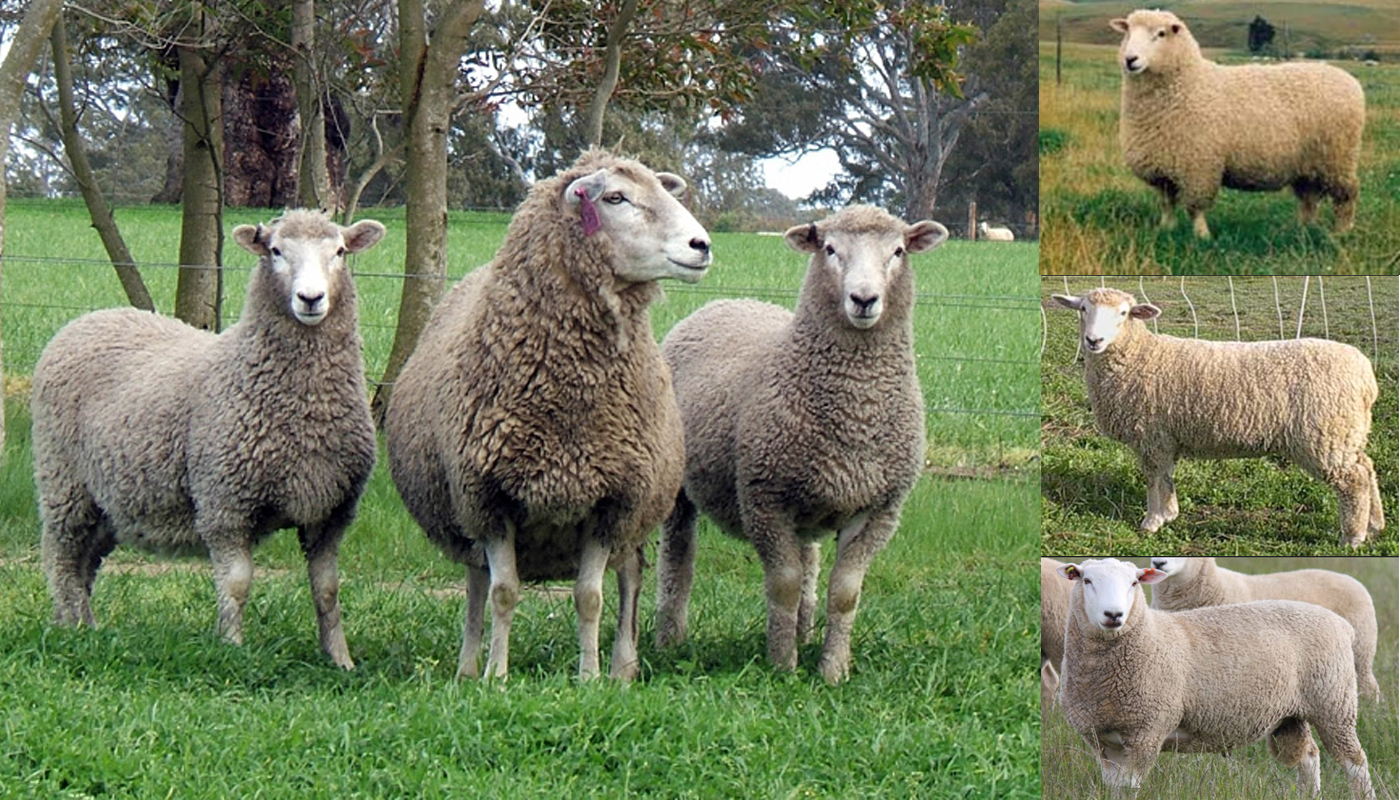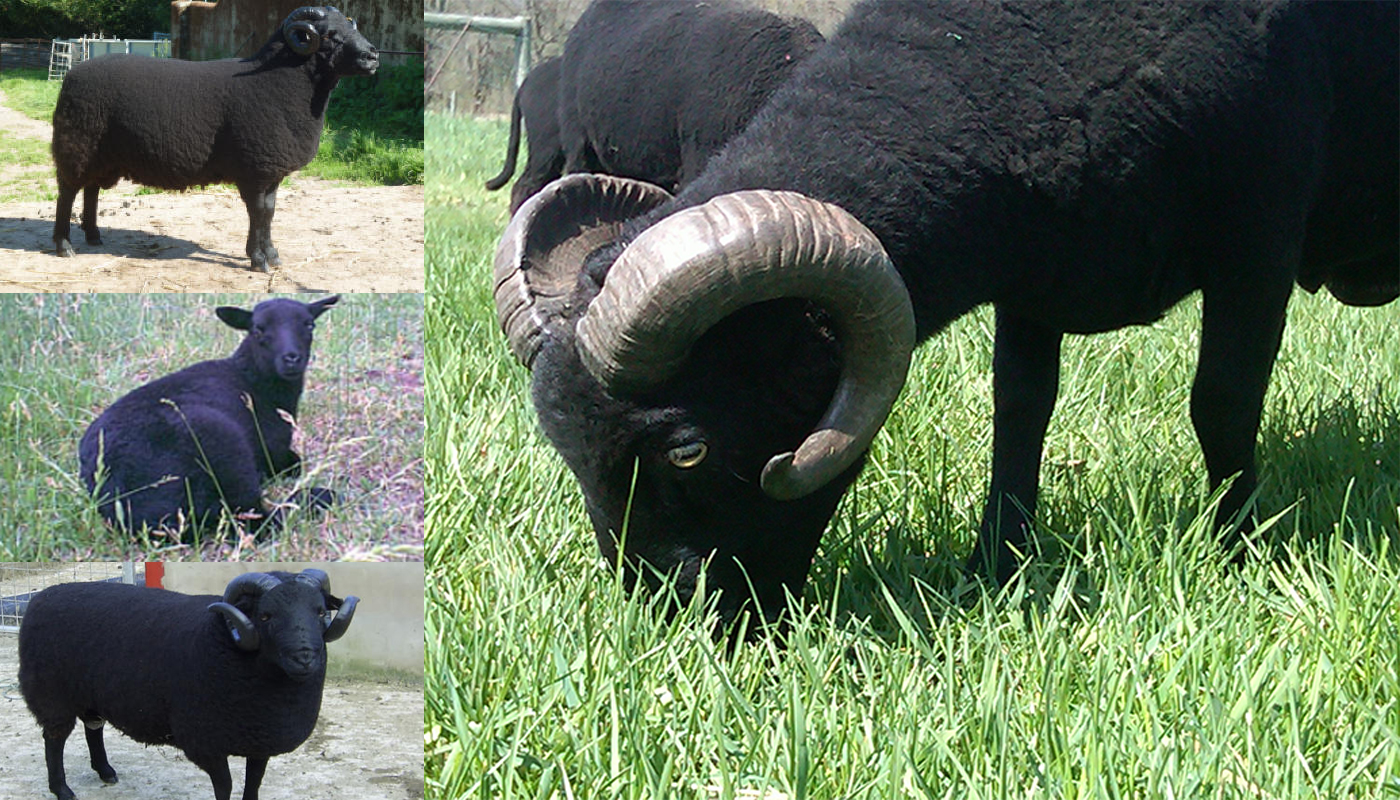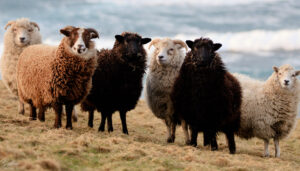
These pretty sheep have soft spongy wool bodies, a great head of fleece, clean brown faces and white bodies. They are active, alert and have been breed through natural selection over two centuries for their wool and meat.
They are a calm, docile and easy to handle bred that are more than capable of fending for themselves on a wide open grazing field.
CLUN FOREST SHEEP QUICK PROFILE OVERVIEW |
|
|---|---|
| These beautiful sheep are compact, muscular and are a very active and alert breed of sheep | |
| Country of Origin: | United Kingdom |
| Related: | Top 20 Best Native British Sheep Breeds |
| Other Names: | None |
| Breed Size: | Medium |
| Main Purpose: | Meat, wool and milk |
| Can be used for | Breed, Meat, Milk, Wool **LSC (Landscape Management) |
| Temperament: | Docile, alert but easy to handle |
| Ideal Climate: | Most climates |
| Conservation Status: |
Yes, Listed by the *ALC Status/ Rarity: Threatened |
| Health Issues? | No known health issues |
| Good Starter Sheep? | Novice to intermediate level of sheep knowledge and operations required to keep this breed |
| Sheep Associations: | North America Clun Forest Association |
| Sheep Clubs: | Please refer to the North America Clun Forest Association for up do date breeders directory and information |
| Note: *ALC stands for American Livestock Conservancy ** LSC stands for Landscape Management – the animal is used for controlling various vegetation growth |
|
PHYSICAL CHARACTERISTICS |
||||||||||||||||||||||||||||||||
|---|---|---|---|---|---|---|---|---|---|---|---|---|---|---|---|---|---|---|---|---|---|---|---|---|---|---|---|---|---|---|---|---|
| The Clun Forest sheep breed has a thick spongy coat with a good-sized body. They have a cap of wool that stops by their polled horns keeping their faces clean. Their wool also stops at the top of their legs giving them clean legs free of wool. Their faces are usually a tan or black color. | ||||||||||||||||||||||||||||||||
| Color(s): | creamy off-white fleece with dark brown faces and lower legs | |||||||||||||||||||||||||||||||
|
||||||||||||||||||||||||||||||||
EWE BREEDING & MILKING INFORMATION
| They only lamb once a year and are really good mothers | |
| Breeding Period/cycle: | Usually lasts 16 to 59 hours |
| Estrous cycle: | Ave. 17 days/15 to 20 days |
| Gestation Period: | Usually, around 149 to 155 days but most gestation is 152 days |
| No. Lambs/Litter: | 1 or 2 (twins) |
| Lactation Period: | Usually, around 150 to 240 day but most are milked for 180 days |
| Milking From: | 4 to 6 weeks after lambing |
| Milk Quality: | Good, Quantity: Enough to wean lambs , Per: Lactation period |
| Milk Ideal for: | Drinking and feeding their lambs |
| You may Also Like: | 10 Best Sheep Breeds for Milk |
SHEEP MEAT PRODUCTION INFORMATION
| The Clun Forest sheep breeds meat has always been known for its highest of quality meat. Their meat is flavorsome, lean, dark with low waisted due to its excellent cutting qualities. Lambs reach mature weights of up to 16 to 20 kgs at around 12 to 17 weeks old. | ||||||||||
| Meat Production: | Yes, Quality: Superior | |||||||||
|
||||||||||
| You may Also Like: | 11 Best Sheep Breeds for Meat Production | |||||||||
SHEEP WOOL PRODUCTION INFORMATION
| They have a dense blocky staple fleece with a well-developed crimp and definition within their fiber. | ||||||||||||||||
| Wool Production? | Yes, Quality: Exceptionally fine fleece quality with a spinning (Bradford count) count of 58 | |||||||||||||||
| Wool is used to Produce: | Knitted garments, clothes, knitting wools | |||||||||||||||
|
||||||||||||||||
| You may Also Like: | 18 Best Wool Producing Sheep Breeds | |||||||||||||||
GOOD TO KNOW ABOUT THE CLUN FOREST SHEEP
| Some information that may be useful to know about he Clun Forest Sheep breed | |
| Child-Friendly? | Children should never be left unsupervised around any livestock no matter what its temperament may be. |
| Landscape Management? | They are excellent foragers and love to roam the landscape in search of greenery to graze on. |
| Where to buy them? | Please refer to North America Clun Forest Association for information on breeders and suppliers of the breed in or around your particular area. |
GENERAL INFORMATION
The Clun Forest Sheep breed is one of the hardiest sheep breeds able to withstand dire circumstances and live solely of the land even in hilly environments.
The hardiness and vigor of this breed helped them survive the drop in sheep production and maintain their numbers through the 1870’s when the grain market collapsed leaving many a farmers land uncultivated and abandoned.
They are not really raised as sheep skin production sheep breed. This does not, however, mean that their sheep skin is not used in some form of leather manufacturing as usually no parts of a sheep bred for meat production goes to waste.
HISTORY
The Clun Forest sheep breed was developed and shaped by natural selection. Shepherds of Shropshire have been developing the Clun Forest Sheep breed for over two centuries for their longevity, fertility, milking, mothering and hardiness.
The sheep as we know them today are active, alert but are easy to handle and have a very good nature. These beautiful sheep have brown faces and legs (sometimes black) and a creamy white body. They have smooth clean faces with white forelocks of wool around their polls. They have wool up to their knees but then are smooth legged below that.
Clun Forest sheep were first imported to America in 1970 where it proved to have a great adaptability to the region to which was imported to. They proved to be a very useful breed of sheep and the North American Clun Forest Association was started in 1974.
Due to its fine qualities, usefulness, and adaptability the Clun Forest Sheep breed has been distributed from Ontario to Hawaii.
The breed association for the Clun Forest Sheep breed prohibits showing and only registers rams that are born as twins. The character of the Clun Forest sheep breed as excellent producers and easy keepers is what makes is a natural choice for grass-based production systems.
Video
USEFUL LINKS
- United States Lamb Resource Center
- American Sheep Industry Association
- American Sheep Industry Association List of Breed Associations & Standards
- American Milk Sheep Association
- Dairy Sheep Association of North America
- American Wool Council
- Fur Commission USA
- North American Meat Institute
- American Lamb Board
- National Lamb Feeders Association
- American Livestock Conservancy
- Animal Shelter (ASPCA)
- American Veterinary Medical Association
- American Animal Welfare Society
- American Animal Control
- American Animal Husbandry Society
- United States Department of Agriculture
 Coopworth Sheep Breed – Everything You Need to Know
Coopworth Sheep Breed – Everything You Need to Know Black Welsh Mountain Sheep Breed – Everything You Need to Know
Black Welsh Mountain Sheep Breed – Everything You Need to Know Soay Sheep Breed – Everything You Need to Know
Soay Sheep Breed – Everything You Need to Know Top 20 Best Native British Sheep Breeds
Top 20 Best Native British Sheep Breeds East Friesian Sheep Breed – Everything You Need to Know
East Friesian Sheep Breed – Everything You Need to Know Discover Sheep Breed Diversity: A Comprehensive Guide
Discover Sheep Breed Diversity: A Comprehensive Guide Cheviot Sheep Breed – Everything You Need to Know
Cheviot Sheep Breed – Everything You Need to Know Suffolk Sheep Breed – Everything You Need to Know
Suffolk Sheep Breed – Everything You Need to Know Merino Sheep Breed – Everything You Need to Know
Merino Sheep Breed – Everything You Need to Know Shropshire Sheep Breed – Everything You Need to Know
Shropshire Sheep Breed – Everything You Need to Know North Country Cheviot Sheep Breed – Everything You Need to Know
North Country Cheviot Sheep Breed – Everything You Need to Know Herdwick Sheep Breed – Everything You Need to Know
Herdwick Sheep Breed – Everything You Need to Know